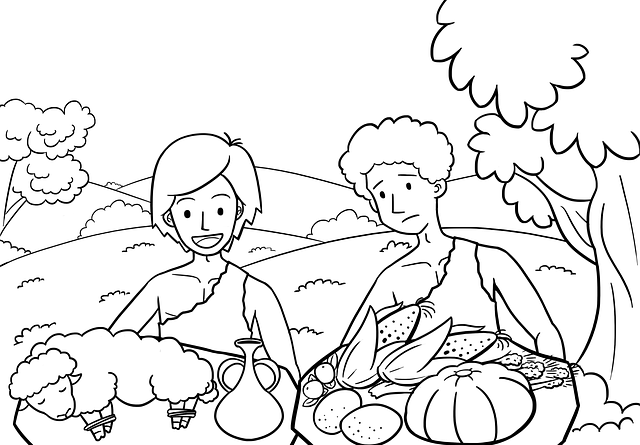Imagine stepping back in time and witnessing one of the most iconic parables from the Bible come to life. In “The Good Samaritan: Animated Bible Story,” you will find yourself engrossed in a captivating tale of compassion, kindness, and unexpected heroes. Follow along as the vibrant illustrations and dynamic narration transport you to ancient Jerusalem, where a traveler’s desperate need for help reveals the true meaning of humanity. Prepare to be inspired as this timeless story unfolds before your eyes, leaving you with a renewed sense of empathy and a powerful reminder of the good that exists within us all.

Overview
In this comprehensive article, we will delve into the animated adaptation of the well-known biblical parable of the Good Samaritan. We will explore the background information, key characters, synopsis, artistic style, voice cast, and the message and themes conveyed in this adaptation. Furthermore, we will discuss its religious significance, impact and reception, and compare it with other adaptations. We will also explore the lessons and takeaways that can be derived from this animated version and how it can be incorporated into religious education. Finally, we will conclude by examining its continued relevance and enduring legacy.
Background Information
The Good Samaritan is a parable found in the New Testament of the Bible, specifically in the Gospel of Luke (Luke 10:25-37). It tells the story of a man who was attacked and left half-dead by robbers. Despite being ignored by a priest and a Levite who pass by, a Samaritan comes to his aid and shows great compassion. The parable teaches the importance of showing kindness and compassion to those in need, regardless of their background or social status.
Key Characters
The key characters in the parable of the Good Samaritan include:
- The traveler: The man who falls victim to the robbers’ attack and is left injured on the road.
- The priest: A religious leader who passes by the injured traveler but chooses not to help.
- The Levite: Another religious figure who also passes by but fails to assist the injured man.
- The Samaritan: A despised and socially marginalized figure who comes to the aid of the injured traveler, showing great compassion and kindness.
Synopsis
The animated adaptation of the Good Samaritan parable faithfully portrays the events described in the biblical story. It begins with the traveler journeying alone on a dangerous road. Suddenly, he is attacked by robbers and left severely injured. As he lies helpless on the roadside, a priest passes by and notices his plight but chooses to ignore him. Soon after, a Levite comes across the wounded man but likewise chooses not to lend a helping hand. Finally, a Samaritan, who would typically be viewed with contempt by the traveler due to their cultural differences, approaches the scene. Despite the prejudice that exists between them, the Samaritan selflessly takes care of the injured man, providing aid and ensuring he receives the necessary medical attention. The story ends with the Samaritan’s words encouraging others to show the same compassion and kindness to those in need.

Key Events
The key events in the animated adaptation of the Good Samaritan include:
- The traveler’s journey: The story begins with the traveler embarking on his journey.
- Robbery and attack: The traveler is attacked by robbers and left injured on the roadside.
- The priest’s ignorance: The priest passes by the injured man but chooses not to stop and help.
- The Levite’s indifference: The Levite also passes by without offering assistance.
- The Samaritan’s compassion: The despised Samaritan comes to the traveler’s aid, showing compassion and kindness.
- Care for the injured traveler: The Samaritan tends to the injured man, providing aid and ensuring he receives medical attention.
- Encouraging others: The story concludes with the Samaritan’s words encouraging others to show compassion and kindness to those in need.
Message and Themes
Compassion and Kindness
At the heart of the parable of the Good Samaritan lies the message of compassion and kindness towards others. This animated adaptation effectively portrays the importance of extending care and assistance to those in need, irrespective of societal divisions, such as race, culture, or religion. The Samaritan’s exemplary act of compassion serves as a reminder for viewers to prioritize empathy and selflessness in their own lives.
Overcoming Prejudice
The adaptation also explores the theme of overcoming prejudice. By highlighting the Samaritan, a figure often despised and marginalized in society, the animation challenges stereotypes and encourages viewers to question their own biases. It teaches that true kindness and compassion know no boundaries and that everyone deserves help and understanding, regardless of their background or social standing.
Helping Others in Need
The notion of helping others in times of need is another key theme present in this adaptation. The parable emphasizes the importance of being proactive and supportive, stepping forward to assist those who require help. Through the Samaritan’s actions, viewers are encouraged to be vigilant and compassionate, always ready to lend a hand to those who are suffering or vulnerable.
Religious Significance
Biblical Context
The parable of the Good Samaritan is an integral part of Christian scripture, specifically found in the New Testament’s Gospel of Luke. It is presented by Jesus in response to a question from a lawyer who seeks to test Jesus’ knowledge of the law. In this context, the parable serves as a powerful illustration of the commandment to love one’s neighbor as oneself.
Jesus’ Teachings
Jesus’ teachings often revolved around love, compassion, and treating others with kindness. The parable of the Good Samaritan is no exception, as it emphasizes the importance of displaying such virtues in personal interactions. By showcasing the despised Samaritan as the embodiment of love and compassion, Jesus challenges societal norms and calls for a radical shift in attitudes towards others.
Interpretations
The parable of the Good Samaritan has been interpreted in various ways by theologians and scholars throughout history. Some view it as an allegory for the universal call to love and care for all people, while others emphasize its relevance in addressing issues of racism, social justice, and empathy. The animated adaptation offers viewers the opportunity to explore these interpretations and reflect on their personal understanding of the parable’s message.

Impact and Reception
Critical Acclaim
The animated adaptation of the Good Samaritan has garnered critical acclaim for its faithful retelling of the biblical parable and its captivating animation. Critics praise its ability to engage audiences of all ages and its successful portrayal of the parable’s central themes of compassion and kindness. The animation is praised for its visually stunning style and meticulous attention to detail, which adds depth to the storytelling.
Audience Response
The adaptation has received a positive response from audiences, with viewers of all ages expressing appreciation for its relatable characters and meaningful message. Many have shared how the animation’s portrayal of empathy and overcoming prejudice has resonated with them, encouraging introspection and a renewed commitment to helping those in need. Parents especially value the animation as a tool to teach their children important values in a visually captivating and accessible format.
Educational Value
Beyond its impact on individuals, the animated adaptation of the Good Samaritan holds educational value. Teachers and educators have found it to be a valuable resource for teaching empathy, character development, and social responsibility. By discussing the animation’s themes and lessons, students are encouraged to examine their own attitudes and actions towards others, fostering personal growth and a more compassionate mindset.
Comparison with Other Adaptations
Live-Action Films
The Good Samaritan parable has also been adapted into live-action films, offering a different perspective on this timeless story. While live-action adaptations may provide a more realistic portrayal, the animated version facilitates a broader exploration of visual styles and allows for greater creativity in depicting the parable’s themes and characters.
Other Animated Versions
Various animated adaptations of the Good Samaritan parable exist, each adding a unique touch to the story through their artistic style, voice cast, and interpretation. These adaptations often target different age groups, providing opportunities for viewers of all ages to engage with the parable in a format that is accessible and relatable to them.

Lessons and Takeaways
Teaching Empathy
One of the key lessons that can be derived from this animated adaptation is the importance of teaching empathy. By incorporating the story of the Good Samaritan into discussions and educational settings, children and adults alike can learn to put themselves in others’ shoes, understand their struggles, and respond with kindness and compassion.
Promoting Helpful Behavior
The animated adaptation serves as a powerful tool for promoting helpful behavior. By presenting the Samaritan as a model of compassion, viewers are encouraged to emulate his actions and actively seek opportunities to assist those in need. This animated version effectively reinforces the idea that small acts of kindness can make a significant difference in someone’s life.
Incorporation in Religious Education
Bible Study
The animated adaptation of the Good Samaritan is an excellent resource for Bible study sessions. It can be used to analyze the parable in-depth, explore its historical and cultural context, and encourage participants to reflect on its relevance in their own lives. The animation brings the story to life, sparking meaningful discussions and promoting a deeper understanding of Jesus’ message.
Sunday School Lessons
For Sunday school lessons, the animated adaptation offers an engaging and relatable way to teach children important moral lessons. Through age-appropriate discussions and activities, children can learn about empathy, overcoming prejudice, and the importance of helping others. The animation’s visual appeal and engaging narrative make it an effective tool for conveying these teachings in a manner that captures the attention of young learners.
Conclusion
The animated adaptation of the Good Samaritan parable is a compelling and visually captivating depiction of timeless themes of compassion, overcoming prejudice, and helping others in need. With its critical acclaim, positive audience response, and educational value, the animation has become a cherished resource for teaching empathy and promoting helpful behavior. Whether viewed in religious settings, educational institutions, or family settings, the enduring legacy of this adaptation lies in its ability to inspire individuals to show kindness and compassion towards one another, reminding us all of the continued relevance of its message in today’s world.







